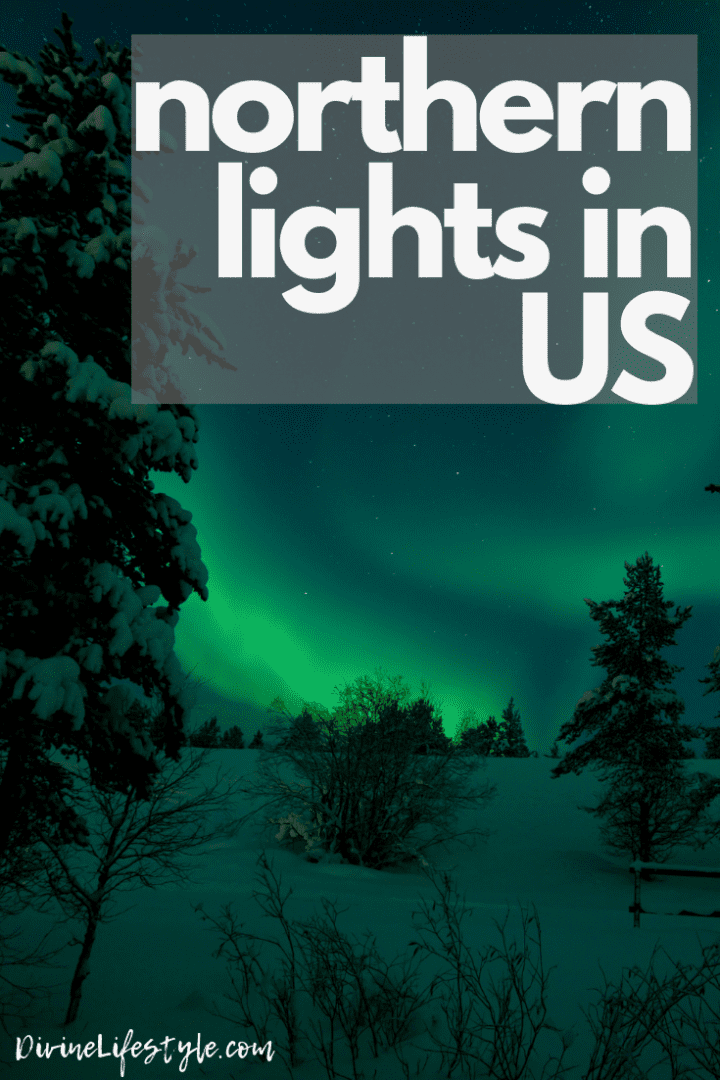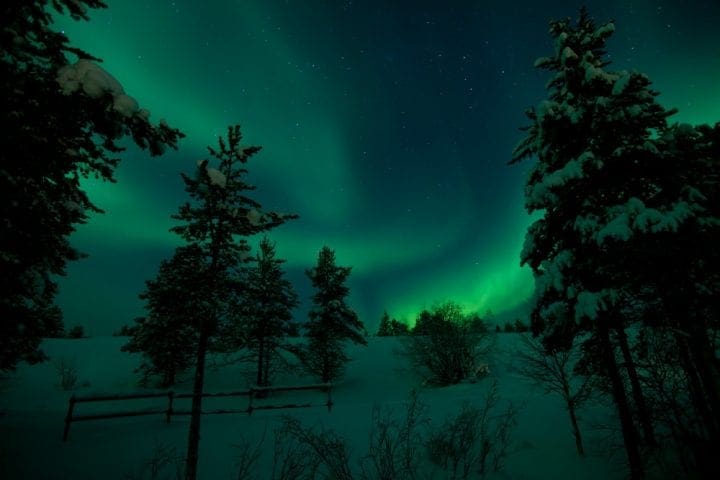Celebrity Edge Cruise Ship First Look
Celebrity Edge Cruise Ship First Look With modern technology, cruise ships have become much more advanced than they were in the past. Celebrity Cruises is a great example of a shipbuilder that has taken...
The Aurora Borealis, or Northern Lights, is the most unforgettable light show available to us in the northern hemisphere. Alaska, being the most northern of the United States, is an excellent place to view the aurora. We hope that you are inspired by this Best Place To See Northern Lights in North America post.

Aurora is a luminous glow in the upper atmosphere, created when energetic particles enter our atmosphere from above, from what is called the magnetosphere. As electrons and protons travel along magnetic field lines, they are attracted to the Earth's poles. Here they collide with atoms and molecules. These collisions transfer some of the electron or proton's energy to the atom or molecule, where it is stored as internal energy.
As the atom or molecule returns to the non-excited or grounded state, it emits a photon, energy that we perceive as light. This light varies in color depending on the type of atom and the level of excitement. The most common colors are green and red. The red is considered rare, though, because it's at the limit of our vision, and can barely be seen, although it is very bright. From Earth, most of the visible auroral activity occurs between 60 and 200 miles above us. The resulting light displays vary from subtle, still glows that can easily be mistaken for clouds, to dramatic curtains and rivers of light that dance, shimmer, and shoot across the sky.
There is always aurora in the sky, constantly. Whether it can be seen or not depends on location, intensity, other available light, and weather conditions. A dark clear night, away from the glow of cities or towns, is best for aurora viewing. Nights when the moon is new are best, while full moon nights can make aurora viewing more difficult.
 Where can we see Aurora?
Where can we see Aurora?As the name indicates, the best places to view northern lights are in the north: Alaska, northern Canada, and Scandinavian Europe. It is, however, possible to see them farther south. Aurora has been visible as far south as Georgia but is more commonly seen (though still somewhat rare) in the northern tier of the United States. To improve your chances of seeing northern lights, visit Alaska.
Northern lights are visible throughout Alaska, but your chances of seeing them improve the farther north you travel. Weather is also a factor. The cloudy, wet climates of the Southeast “Panhandle” and Aleutian Chain make viewing less likely, though still very possible. Anchorage, Alaska's biggest city, emits a lot of interfering light, although it's possible to drive away from the city for better views.
 Fairbanks, Alaska
Fairbanks, AlaskaFairbanks, Alaska is the best travel destination to specifically view the Northern Lights. Fairbanks is the most northerly of Alaska's larger cities, and its inland location enjoys clearer weather than the state's coastal towns. The surrounding terrain is not as mountainous as other parts of Alaska, giving a better, unobstructed view of the sky. The University of Fairbanks Geophysical Institute is one of the world's centers of aurora study. Fairbanks is easy to get to in Alaskan terms, which means it's served by commercial airlines and is connected to the “outside” by highways. Fairbanks, like any population center, emits a “city glow” that can interfere with aurora viewing, but nearby wilderness provides excellent viewing.
If your travel plans take you elsewhere in Alaska, you are still very likely to view the northern lights. Don't make the mistake of assuming you won't see them just because you can't make it to Fairbanks. As northern latitudes receive most of their daylight in the summer months, winter is the best time to see Northern Lights. The long hours of darkness and generally clearer winter weather make a good display more likely to be visible during a visit to the region.
Predicting where and when auroral activity will be strong is less precise than weather prediction, but it is possible to a certain extent. The Fairbanks Geophysical Institute maintains an aurora forecast Website that ranks auroral activity on a number scale from 0 (minimum) to 9 (maximum). The default map on the page shows the state of Alaska, but you can choose different maps from a box on the upper left-hand side of the page, including North America, Europe, the North Pole region, and the South Pole. You can see past and future activity by cycling through the “previous” and “next” day buttons for up to seven days. The site also offers short-term forecasts that show auroral activity at the current hour, or long-term forecasts up to 28 days. This last is helpful for those planning to travel to see northern lights. This Website is probably the best source for information about the auroras and is an essential tool for anyone hoping to improve their chances of seeing northern lights.
The best time to see the northern lights in North America is generally from late September to mid-April when the skies are darkest. However, even within this timeframe, there's no guarantee you'll see the lights, as they're a natural phenomenon. But if you're patient and persistent, you're sure to be rewarded with a spectacular light show!
Endless Possibilities Await During A Memorable Alaskan Fishing Vacation
When going out to view the aurora, dress for the weather! If it's a good night for viewing, you won't want to leave, so make sure you're comfortable. Take a camp chair or blanket to sit on. The popular camping lounge chairs are ideal, as you can recline and view the sky without straining your neck. If you hope to take photos, you'll need a tripod and a camera capable of manual shutter release or low-light capture. Don't bother with binoculars or telescopes, you'll see the aurora better without them.
Find a place with an unobstructed view of the sky, away from the city or streetlights. The darker your view, the better. Turn off any lights you used to reach the spot. The more your eyes adjust to the darkness, the more you'll be able to see the display. Take a thermos of hot drinks and some snacks. Make an evening of it, stay out as long as you can, and enjoy! Once seen, even a halfway decent display of Aurora Borealis will never be forgotten. It is truly one of the most exciting, incredible views of our night sky, well worth the time and effort to see! We hope that you are inspired by this Best Places in the United States to see the Northern Lights post. Happy travels!

Pingback: Porsche Experience Center Atlanta Georgia Divine Lifestyle
Pingback: Apple Fritters Recipe